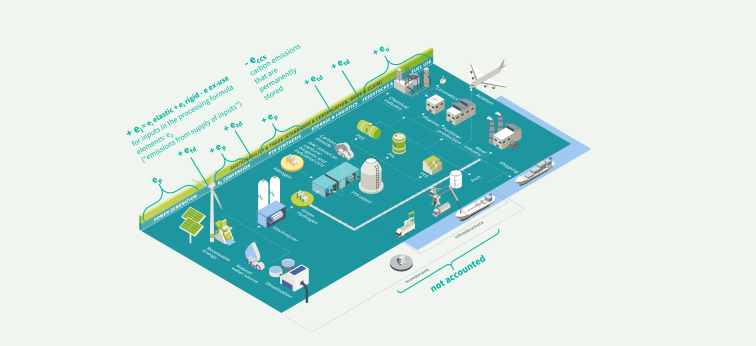EU policy developments: CBAM & rules for emissions accounting
By Julian Atchison on July 06, 2022
Hydrogen & ammonia now included in CBAM
As the Carbon Border Adjustment Mechanism (CBAM) moves closer to implementation, MEPs in Strasbourg have voted to alter its scope and raise ambitions. CBAM will now cover imports of organic chemicals, plastics, hydrogen and ammonia into the EU. MEPs also voted for the CBAM to cover indirect emissions from manufacture, and for a single, centralised authority to oversee the system.
The CBAM is a critical policy plank for decarbonisation in the EU. Ambitious internal decarbonisation policy (programs like Fit for 55) needs to be paired with mechanisms that address the risk of carbon leakage into the EU via emissions-intensive imports.
Thanks to CBAM, the EU will finally have a tool to incentivise our global trading partners to decarbonise their manufacturing industries, as no matter where you pollute, you will now have to pay for it, if you want to export to the European market. CBAM will therefore significantly contribute to meeting EU and global climate targets.
Lead rapporteur for the European Parliament’s Environment Committee Mohammed Chahim (S&D, NL) in the official press release, 22 June 2022
Delegated Acts for Articles 27 & 28: shaping PtX ramp-up in Europe

And two Delegated Acts (DA) have added updates to a key piece of existing legislation (the Renewable Energy Directive II). The first DA sets out the requirements for electrolytic hydrogen to be considered “fully renewable”. Either: i) the renewable electricity generating facility must start operations no earlier than 36 months before the electrolysers, ii) the electrolysers need to be grid-connected in a bidding zone where average renewable share exceeded 90% in the last calendar year, or iii) the electricity purchased via a PPA meets certain requirements.
The second introduces a comprehensive formula for calculating emissions savings from use of fuels derived from electrolytic hydrogen. Emissions from the whole life cycle of fuel production are covered, except for infrastructure requirements. A minimum threshold of 70% is set for emissions savings from use of hydrogen-derived fuels (compared to fossil fuel analogues). The European Commission has just concluded a feedback process on the implications of these two DAs for renewable hydrogen production, and industry bodies like Hydrogen Europe expect further clarifications & improvements to emerge as the year progresses.